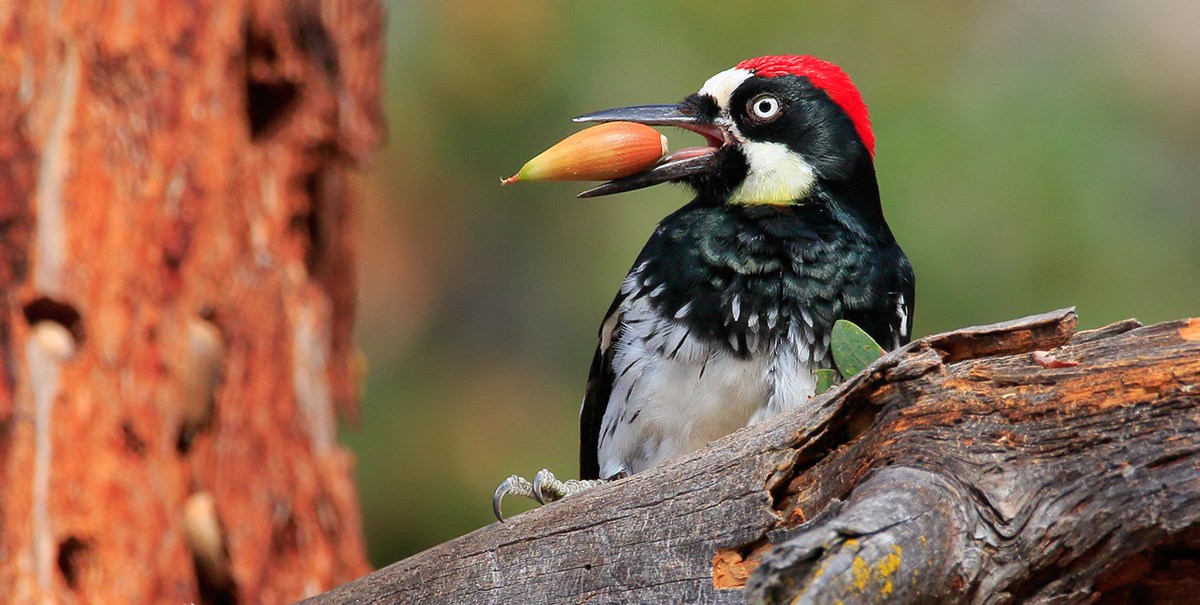Discovering Woodpeckers in Florida: Types Variety and Nature
Revealing the Keys of Woodpeckers: Behavior, Habitat, and A Lot More
Woodpeckers, with their one-of-a-kind actions and specialized adjustments, have actually long amazed scientists and nature lovers alike. By discovering the mysteries surrounding woodpeckers' actions and environment options, a deeper understanding of these avian wonders arises, supplying a glance right into their interesting world.
Woodpecker Actions Insights
In checking out woodpecker actions, a remarkable screen of specialized skills and adjustments arises, clarifying their amazing ecological particular niche - Woodpeckers in Florida. Woodpeckers, understood for their distinctive drumming on trees, possess a selection of behavioral traits that add to their survival and success in their atmosphere. One essential behavior is their drumming, which offers multiple objectives such as interaction, establishing region, drawing in mates, and situating food sources. This balanced pecking likewise showcases their remarkable toughness and endurance, as they can hammer away constantly at broadband without triggering harm to themselves.
Additionally, woodpeckers show a distinct feeding actions characterized by their capability to extract pests from tree bark utilizing their specialized beaks. Their long, barbed tongues aid in recording prey, while their solid neck muscles supply security and precision during pecking activities. This feeding strategy enables woodpeckers to accessibility hidden insect larvae and extract them with impressive efficiency.
Habitat Preferences and Choice
What factors affect the environment choices and option of woodpeckers? One vital variable affecting woodpecker environment choice is the accessibility of appropriate nesting sites. Woodpeckers generally prefer forests with a mix of fully grown trees that give adequate chances for tooth cavity excavation.
Furthermore, woodpeckers show a preference for environments with a plentiful supply of food sources. They are mainly insectivorous, feeding on beetles, ants, larvae, and other pests discovered in decaying wood or tree bark. Consequently, woodpeckers tend to prefer wooded areas with a varied insect population to meet their nutritional demands.
Additionally, the existence of dead or decaying trees is an additional crucial consider woodpecker environment choice. These trees not only give food sources yet additionally use suitable substratum for tooth cavity excavation. Dead trees are important for the upkeep of healthy woodpecker populaces, as they play a crucial role in the woodpeckers' life process and community characteristics.
Feeding Practices and Diet Regimen Structure
Woodpeckers show a specialized feeding habits concentrated on foraging for bugs within numerous habitats. Their diet regimen mainly includes insects such as beetles, ants, caterpillars, and crawlers, which they locate by tapping on tree bark and paying attention for the sound of activity inside. Woodpeckers use their strong beaks to pierce into the wood and their lengthy, barbed tongues to extract victim from holes. In addition to bugs, woodpeckers additionally consume tree sap, fruits, nuts, and seeds, including selection to their diet depending upon the period and availability of food resources.
The foraging strategies of woodpeckers are well-adapted to their arboreal way of living (Woodpeckers in Florida). Their capacity to dig deep into timber not just gives them with food yet additionally aids in developing nesting dental caries and developing areas. Woodpeckers play a critical duty in keeping the wellness of woodlands by managing insect populations and helping in the decomposition of wood. Understanding their feeding habits and diet regimen make-up is crucial for preservation efforts targeted at preserving these special and valuable birds.
Drumming Sounds and Interaction
Using fast drumming sounds on numerous surfaces, woodpeckers employ a distinct type of communication to signify area boundaries and bring in companions. This drumming behavior is not just a means of interaction however also offers as a way for woodpeckers to develop their existence within a particular location. The intensity, rate, and pattern of the drumming can convey vital info to various other woodpeckers in the area.
Woodpeckers make use of drumming noises to announce their existence in a territory and to alert off potential burglars. The loud and repetitive nature of the drumming offers as a clear important source signal to other woodpeckers that the location is currently declared. This aids in decreasing problems and reducing physical battles between people.

Survival Adaptations and Specialized Makeup

Final Thought
To conclude, woodpeckers exhibit distinct actions, such as drumming noises for communication, and have actually specialized makeup for survival in their selected habitats. Their feeding behaviors and diet plan make-up additionally demonstrate their flexibility to different environments. By understanding these elements of woodpeckers, researchers and preservationists can much better protect and maintain these interesting birds and their ecosystems.